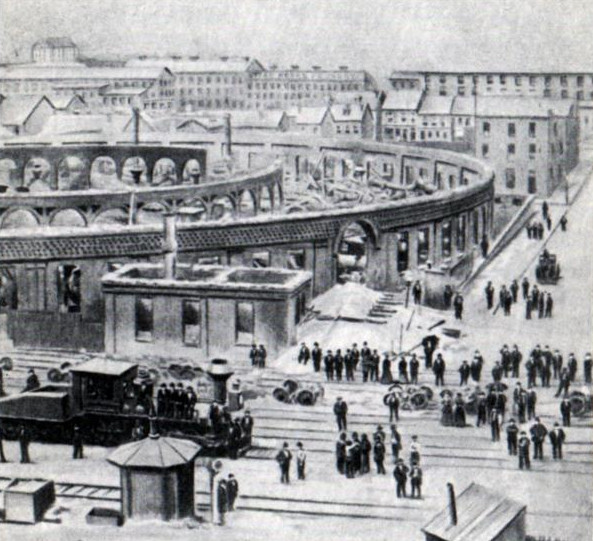The bell that landed at the South Avenue Methodist Episcopal Church took a journey through history.
The journey began in England where there is a long tradition of bell casting and tuning. The Whitechapel Bell foundry, with approximately 450 year history of bell making, closed in June 2017. Whitechapel manufactured the Liberty Bell.
Whitechapel or another foundry cast the bell in 1859.
The bell made its way to the roundhouse of the Pennsylvania Railroad at 28th Street in Pittsburgh. “A railway roundhouse is a building with a circular or semicircular shape used by railways for servicing and storing locomotives, and traditionally surrounds, or is adjacent to, a turntable.” The roundhouse is a center of activity.
The Railroad Strike of 1877 over workload increases and reductions in wages took place in several cities. In Pittsburgh the results were particularly severe. Conflicts developed. Tensions escalated into confrontations with the sheriff and the National Guard.
Before peace settled in, forty people, including women and children, were killed. The Union Depot and thirty-eight other buildings at the train yard burned. Over 120 train engines and 1,200 railway cars were destroyed. Little of the roundhouse remained.

The bell had fallen to the ground. It is believed a dent in the back of the bell came from the heat and the fall.
Through the efforts of Samuel F. McIntyre, a church trustee who worked as a locomotive engineer, the company gave the bell to the church. The bell found a home in the new bell tower of the 1878 addition on the Methodist Episcopal Church on Wallace Avenue near Center Street.
“It tolled at the time of the funeral of President Garfield in 1881, when union services [several congregations meeting together] were held at the church.”
President Garfield served less than four months and died two months after being shot. He won the Republican nomination on the 36th ballot at the convention. He came from a background of scholarship. He taught ancient languages and then became the president of Eclectic Institute, later Hiriam College. The Disciples of Christ church ordained him as a minister. He fought in the Civil War, becoming a major general. Wikipedia tells, “Garfield believed the key to improving the state of African American civil rights would be found in education aided by the federal government.” He proposed a “ ‘universal’ education system funded by the federal government.”
The Methodist Episcopal congregation moved to a new church on South Avenue. They sold the Wallace Avenue Church to the Wilkinsburg Baptist Church in 1883. The bell developed a crack but remained in the bell tower until 1905. The Baptist congregation dedicated a new church building in 1907. “When it was returned by the Baptists . . . it was used as a flower urn in front of the east cloister of the present building. Ultimately it became a casualty of World War II by being contributed to the scrap metal drive!”
______
“Whitechapel Bell Foundry,” Wikipedia.
https://en.wikipedia.org/wiki/Whitechapel_Bell_Foundry
“Railroad roundhouse,” Wikipedia
https://en.wikipedia.org/wiki/Railway_roundhouse
“Pittsburgh railroad strike of 1877,” Wikipedia.
https://en.wikipedia.org/wiki/Pittsburgh_railroad_strike_of_1877
Vernon R. Covell, “A Brief History of Methodism in Wilkinsburg” in Elizabeth M. Davison and Ellen B. McKee eds., Annals of Old Wilkinsburg and Vicinity: The Village 1788–1888. Wilkinsburg, Pa.: Group for Historical Research, 1940, p. 197.
“James A. Garfield,” Wikipedia.
https://en.wikipedia.org/wiki/James_A._Garfield
“James A. Garfield,” Britannica.
https://www.britannica.com/biography/James-A-Garfield
Wilkinsburg Public Library Digital Archives:
Edna Rigg Brown, “ ‘I Remember’ South Ave. Methodist Church,” June 19, 1961, at the Wilkinsburg Historical Society.
“Celebration of 50+ Year Members,” April 29, 2007, WWII bell quotation: p. 1.